How to Ensure Optimal Temperature for Outdoor Telecom Cabinets
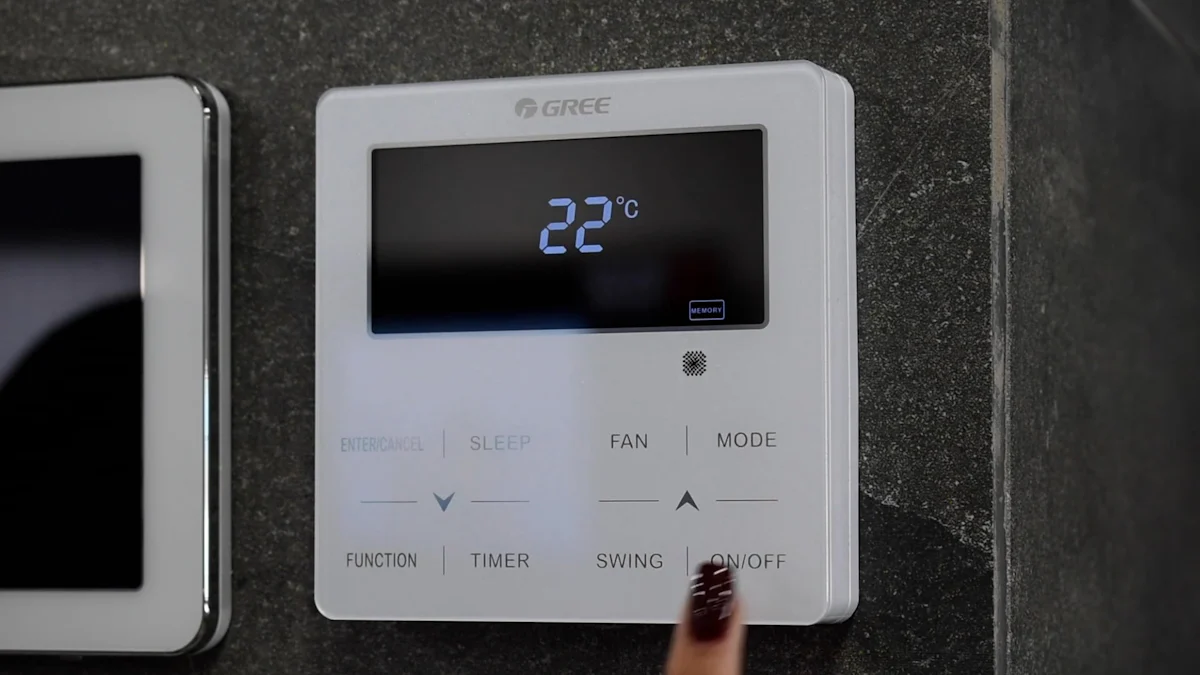
Maintaining the right cabinet telecom temperature is essential for ensuring your equipment performs reliably and lasts longer. Extreme weather conditions, especially in remote areas, can create significant challenges. High temperatures often lead to overheating, which can cause equipment failures and shorten service life. On the other hand, freezing conditions may disrupt operations and damage sensitive components. Studies show that temperature fluctuations directly impact the dependability of telecom networks, making effective thermal management a critical factor in protecting your infrastructure.
Key Takeaways
Maintaining optimal temperature in telecom cabinets is crucial for preventing equipment failures and extending service life.
Implement effective cooling and heating solutions tailored to your environment, such as insulated cabinets and air conditioning systems, to protect your equipment from extreme temperatures.
Regularly monitor internal temperatures using digital sensors and remote monitoring systems to catch potential issues before they escalate.
Conduct routine maintenance on cooling and heating systems to ensure they operate efficiently and prevent temperature-related problems.
Invest in climate-controlled cabinets with advanced thermal management features to safeguard your telecom infrastructure against environmental challenges.
Utilize passive cooling methods, like free cooling and heat exchangers, to reduce energy consumption while maintaining stable temperatures.
In cold climates, ensure reliable heating solutions and backup power systems are in place to protect your equipment from freezing conditions.
Why Maintaining Cabinet Telecom Temperature is Critical
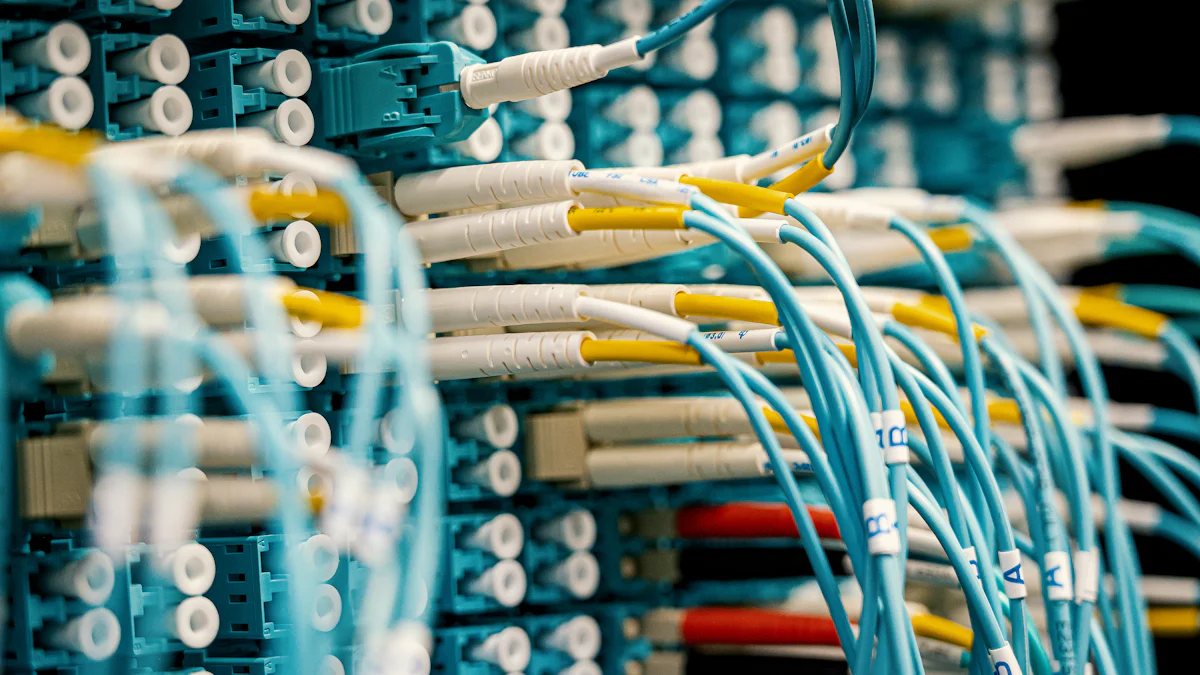
Maintaining the right temperature inside your telecom cabinet is not just a recommendation—it’s a necessity. Extreme temperatures can severely impact the performance and reliability of your equipment. By ensuring optimal thermal conditions, you protect your investment and maintain uninterrupted network operations.
Impact of Temperature Extremes on Telecom Equipment
Temperature extremes pose significant risks to telecom equipment. High temperatures often lead to overheating, which can cause components to fail prematurely. Overheating also increases the likelihood of system malfunctions, reducing the dependability of your network. Studies reveal that proper cooling can reduce failure rates by up to 30%, highlighting the importance of effective heat management.
Cold temperatures, on the other hand, can be equally damaging. Freezing conditions may cause sensitive components to crack or malfunction. Fluctuations between hot and cold environments further exacerbate the problem, leading to premature wear and tear. Without proper temperature control, your equipment becomes vulnerable to these environmental stresses, compromising its functionality and lifespan.
"Efficient thermal management is crucial for ensuring the long life and reliable operation of telecom equipment." This statement underscores the importance of maintaining stable conditions within your cabinet.
Benefits of Optimal Temperature Control
Optimal temperature control offers numerous benefits for your telecom infrastructure. First, it ensures the reliability of your equipment. When your cabinet telecom temperature stays within the recommended range, your systems operate efficiently without interruptions. This stability translates to better network performance and fewer service outages.
Second, maintaining the right temperature extends the lifespan of your equipment. Excessive heat accelerates wear and tear, while controlled conditions help preserve the integrity of your components. Proper cooling and heating systems also prevent unnecessary energy consumption, making your operations more cost-effective.
Lastly, effective temperature control safeguards your network’s signal stability. Temperature fluctuations can disrupt communication signals, leading to poor service quality. By investing in climate-controlled enclosures, you protect your equipment from extreme conditions and ensure consistent performance.
Key Factors Influencing Cabinet Telecom Temperature
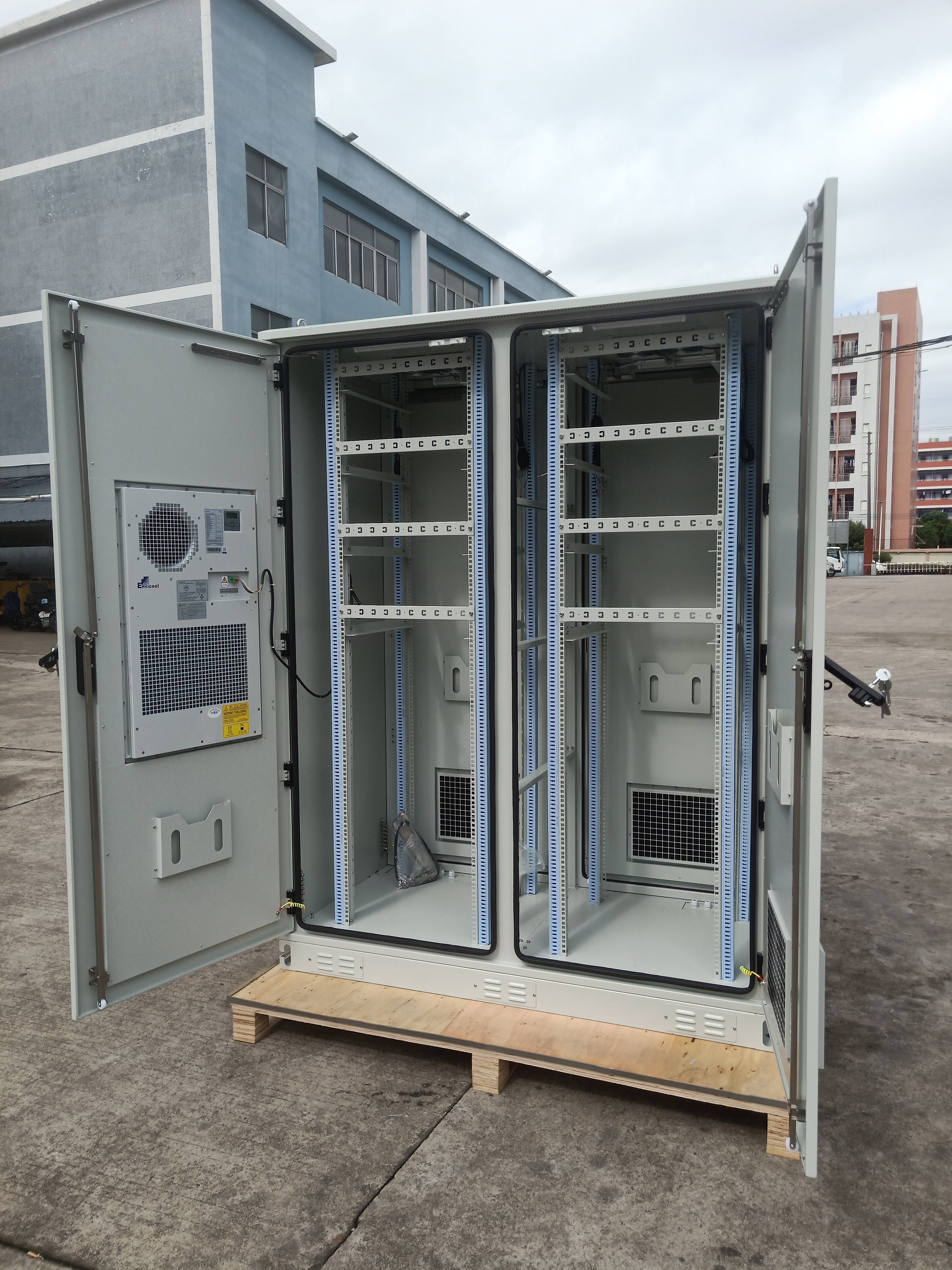
Maintaining the right cabinet telecom temperature depends on several critical factors. Understanding these factors helps you implement effective solutions to protect your equipment and ensure reliable performance.
Environmental Conditions
The environment where your telecom cabinet operates plays a significant role in temperature management. Outdoor cabinets face challenges such as direct sunlight, high humidity, and fluctuating temperatures. In hot climates, excessive heat can cause internal components to overheat, leading to equipment failures. Conversely, cold environments may expose your systems to freezing conditions, which can damage sensitive parts.
To combat these challenges, you should consider climate-specific solutions. For example:
Insulation: Insulated cabinets help regulate internal temperatures by reducing heat transfer between the cabinet and its surroundings. This is especially useful in areas with extreme temperature variations.
Cooling Systems: In hot regions, air conditioners or fan cooling systems effectively dissipate heat. Closed-loop cooling systems, such as air-to-air heat exchangers, also maintain optimal internal temperatures while protecting equipment from dust and moisture.
Heating Solutions: In colder climates, heating systems prevent freezing and ensure stable operations. Backup power sources for heaters can provide additional reliability during power outages.
By addressing environmental factors, you can create a stable operating environment for your telecom equipment.
Cabinet Design and Material
The design and material of your telecom cabinet significantly influence its ability to maintain optimal temperatures. Cabinets made from high-quality materials, such as galvanized steel, offer excellent durability and thermal insulation. Low thermal conductivity materials reduce heat absorption, keeping the internal temperature stable even in harsh conditions.
Double-wall designs with integrated heat insulation further enhance temperature control. These cabinets minimize the impact of external temperature fluctuations, ensuring your equipment remains protected. Additionally, sealing gaps and using fireproof materials improve the cabinet's overall performance and safety.
When selecting a cabinet, prioritize models with advanced thermal management features. For instance, DATACOM outdoor cabinets come with integrated air conditioning systems, providing precise temperature control for sensitive equipment. Such designs ensure your telecom infrastructure operates efficiently, regardless of external conditions.
Equipment Heat Output
The heat generated by the equipment inside your cabinet is another crucial factor. Active telecom equipment, such as routers, switches, and power supplies, produces heat during operation. If not managed properly, this heat can accumulate and raise the internal temperature, leading to overheating.
To address this, you should:
Assess Heat Output: Calculate the total heat output of your equipment to determine the cooling capacity required.
Optimize Airflow: Proper ventilation ensures heat dissipates effectively. Fans and filtered ventilation systems improve airflow, preventing hotspots inside the cabinet.
Use Advanced Cooling Systems: Micro-cooling systems, like those offered by RIGID Technology, provide targeted cooling for high-heat equipment. These systems maintain optimal cabinet telecom temperature, ensuring reliable performance.
By managing equipment heat output, you can prevent thermal issues and extend the lifespan of your telecom components.
Effective Cooling Solutions for Outdoor Telecom Cabinets
Maintaining the right cooling solutions is essential for ensuring your telecom equipment operates efficiently. Outdoor telecom cabinets face various environmental challenges, making effective cooling strategies a necessity. Below are some of the most reliable cooling methods to help you maintain optimal cabinet telecom temperature.
Passive Cooling Methods
Passive cooling methods rely on natural processes to regulate temperature without consuming energy. These methods are cost-effective and environmentally friendly, making them an excellent choice for many outdoor telecom applications.
Free Cooling: This method uses the cooler ambient air from the environment to regulate internal temperatures. It works best in regions with lower outdoor temperatures for most of the year. By leveraging natural air, free cooling can reduce energy consumption by up to 80%, significantly lowering operational costs.
Heat Exchangers: Devices like the PKS 3000 Series Air/Air Heat Exchangers are highly effective in urban areas. These systems use a closed-loop design to prevent contaminants like dust and moisture from entering the cabinet while efficiently transferring heat. This approach not only maintains stable temperatures but also protects sensitive equipment from environmental pollutants.
Insulated Cabinet Designs: Cabinets with double-wall construction and integrated insulation minimize heat transfer. This design helps maintain a stable internal environment, reducing the need for active cooling systems.
Passive cooling methods are ideal for regions with moderate climates or where energy efficiency is a priority.
Active Cooling Systems
Active cooling systems provide a more robust solution for cabinets located in extreme environments. These systems use mechanical components to actively manage heat, ensuring consistent performance even in challenging conditions.
Air Conditioners: Integrated air conditioning systems, like those found in DATACOM Outdoor Cabinets, offer precise temperature control. These systems are particularly effective in hot climates where passive methods may not suffice. They ensure that sensitive equipment remains protected from overheating.
Fan Ventilation: Fans improve airflow within the cabinet, preventing hotspots and evenly distributing cool air. This method is simple yet effective for managing moderate heat loads. Products like Ventilation and Fans are designed to enhance airflow while maintaining energy efficiency.
Micro DC Air Conditioners: The Rigid Micro DC Aircon is a specialized solution for cabinets with irregularly shaped components or sensitive parts. This system adapts to various internal configurations, providing targeted cooling where it’s needed most.
Active cooling systems are essential for maintaining optimal cabinet telecom temperature in regions with extreme heat or high humidity.
Advanced Cooling Technologies
For cutting-edge telecom installations, advanced cooling technologies offer unparalleled efficiency and reliability. These solutions combine innovation with practicality to meet the demands of modern telecom networks.
Kinetic Cooling Systems: Advanced systems like those in the PKS 3000 Series use innovative designs to maximize cooling efficiency. These systems are particularly useful in areas with high levels of dust or particulates, ensuring clean and cool air circulates within the cabinet.
Hybrid Cooling Solutions: Combining passive and active methods, hybrid systems optimize energy use while maintaining stable temperatures. For example, free cooling can be paired with air conditioning to reduce energy consumption during cooler months.
Smart Cooling Systems: Intelligent cooling technologies monitor internal and external conditions in real-time. These systems automatically adjust cooling levels based on the cabinet’s needs, ensuring efficient operation and reducing energy waste.
Advanced cooling technologies are ideal for telecom operators looking to future-proof their infrastructure while minimizing operational costs.
"Choosing the right cooling solution is critical for protecting your telecom equipment and ensuring uninterrupted network performance."
By implementing these cooling methods, you can safeguard your telecom infrastructure against environmental challenges and maintain reliable operations.
Heating Solutions for Maintaining Cabinet Telecom Temperature in Cold Climates
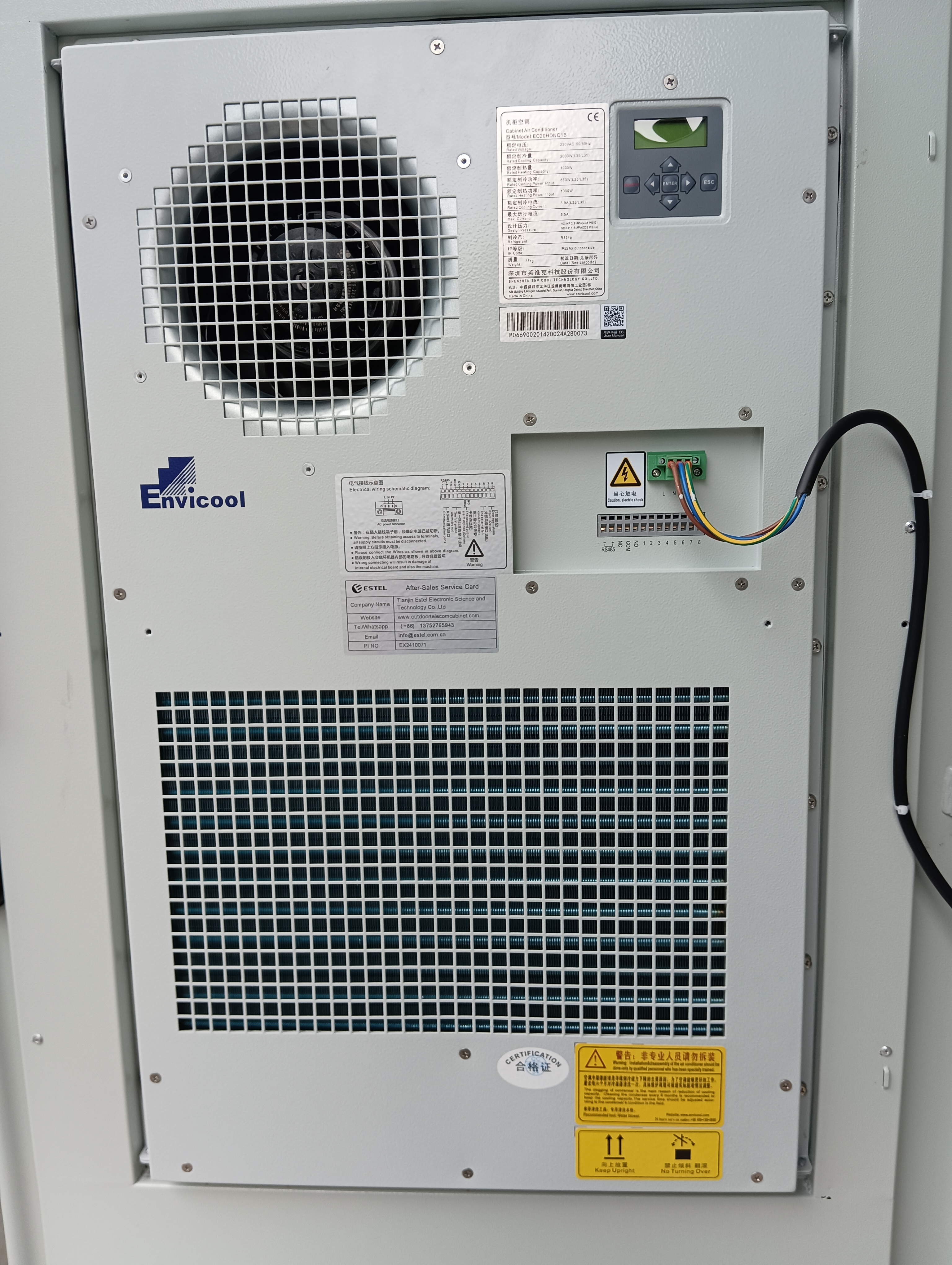
Cold climates pose unique challenges for maintaining the functionality of telecom equipment. Without proper heating solutions, freezing temperatures can damage sensitive components and disrupt operations. Implementing effective heating strategies ensures your equipment remains operational and protected, even in extreme conditions.
Types of Heating Systems
Heating systems play a vital role in preventing freezing and maintaining stable internal temperatures. Choosing the right system depends on your specific needs and environmental conditions. Here are some common options:
Electric Heaters: These heaters provide consistent warmth and are easy to install. They are ideal for cabinets in areas with prolonged freezing temperatures.
PTC (Positive Temperature Coefficient) Heaters: These self-regulating heaters adjust their output based on the surrounding temperature. They offer energy efficiency and reduce the risk of overheating.
Fan-Assisted Heaters: These systems combine heating elements with fans to distribute warm air evenly. This prevents cold spots and ensures uniform temperature control.
Air-to-Air Heat Exchangers: These devices exchange cold external air with warm internal air, maintaining a balanced temperature. They are energy-efficient and help protect equipment from freezing.
Selecting the appropriate heating system ensures your cabinet telecom temperature remains within the optimal range, safeguarding your equipment from cold-related damage.
Insulation and Thermal Management
Insulation is a critical component of thermal management in cold climates. Proper insulation minimizes heat loss and reduces the energy required to maintain a stable temperature. Here’s how you can enhance insulation and thermal management:
Double-Wall Construction: Cabinets with double-wall designs and integrated insulation provide superior thermal protection. This design reduces heat transfer and maintains a consistent internal environment.
Sealing Gaps: Ensure all gaps and openings in the cabinet are sealed. This prevents cold air from entering and warm air from escaping.
Climate-Controlled Cabinets: These cabinets come equipped with advanced thermal management features, such as natural convection and fan-assisted heating. They combat condensation and freezing, ensuring reliable equipment performance.
By focusing on insulation and thermal management, you can create an energy-efficient solution that protects your telecom infrastructure from harsh winter conditions.
Backup Power for Heating Systems
Power outages in cold climates can leave your heating systems inoperable, exposing your equipment to freezing temperatures. Backup power solutions ensure uninterrupted heating and protect your telecom cabinet during emergencies. Consider the following options:
Uninterruptible Power Supply (UPS): A UPS provides temporary power to your heating systems during outages. It ensures continuous operation until the primary power source is restored.
Battery Backup Systems: These systems store energy and supply power to heaters when needed. They are reliable and easy to integrate into your existing setup.
Generators: For prolonged outages, generators offer a dependable source of backup power. They can support both heating systems and other critical equipment.
Investing in backup power solutions ensures your cabinet telecom temperature remains stable, even during unexpected power disruptions.
"Reliable heating systems, combined with proper insulation and backup power, are essential for maintaining optimal cabinet telecom temperature in cold climates."
By implementing these heating solutions, you can safeguard your telecom equipment from freezing conditions and ensure uninterrupted network performance.
Monitoring and Maintenance for Optimal Cabinet Telecom Temperature
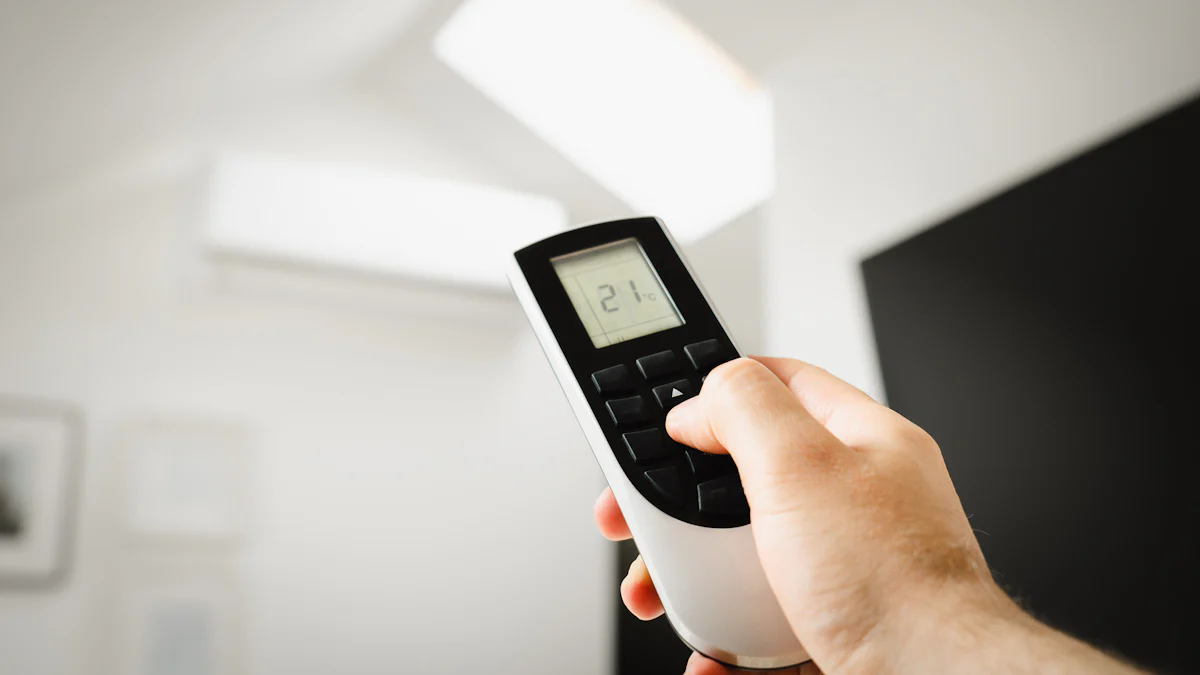
Proper monitoring and maintenance are essential for ensuring your telecom equipment operates efficiently and remains protected from temperature-related issues. By implementing effective practices, you can prevent costly repairs, extend the lifespan of your equipment, and maintain uninterrupted network performance.
Importance of Temperature Monitoring
Monitoring the temperature inside your telecom cabinet is crucial for identifying potential issues before they escalate. Sudden temperature fluctuations can lead to equipment malfunctions or failures. By keeping a close watch on internal conditions, you can take timely action to address problems.
Modern temperature monitoring systems provide real-time data on internal and external conditions. These systems use sensors to track temperature changes and alert you when readings exceed safe thresholds. For example:
Digital Temperature Sensors: These sensors offer precise measurements and are easy to integrate into your cabinet setup.
Remote Monitoring Systems: These systems allow you to track temperature data from a central location, making them ideal for cabinets in remote areas.
Smart Alarms: Advanced systems send alerts via email or SMS when temperatures deviate from the optimal range.
"Temperature control is crucial for the service life and stability of communication network signals." This highlights the importance of continuous monitoring to maintain cabinet telecom temperature within safe limits.
By investing in reliable monitoring tools, you can ensure your equipment stays protected and performs optimally.
Regular Maintenance Practices
Routine maintenance plays a vital role in preventing temperature-related issues. Neglecting maintenance can lead to clogged vents, malfunctioning cooling systems, or compromised insulation, all of which can disrupt operations.
Here are some essential maintenance practices to follow:
Inspect Cooling and Heating Systems: Check fans, air conditioners, and heaters regularly to ensure they function correctly. Clean filters and replace worn-out components as needed.
Clean Vents and Airflow Paths: Dust and debris can block airflow, causing heat to build up inside the cabinet. Regular cleaning prevents this issue and ensures efficient cooling.
Check Seals and Insulation: Inspect the cabinet for gaps or damaged insulation. Proper sealing prevents external air from affecting internal temperatures.
Test Backup Power Systems: Ensure that UPS units, batteries, and generators are in good working condition to support heating or cooling systems during power outages.
Consistent maintenance reduces the risk of equipment failure and helps maintain a stable cabinet telecom temperature.
Preventive Measures for Temperature Control
Taking preventive measures minimizes the likelihood of temperature-related problems. Proactive steps ensure your telecom cabinet remains resilient against environmental challenges.
Install Climate-Controlled Cabinets: Cabinets with built-in thermal management features, such as double-wall construction and integrated cooling or heating systems, provide superior protection.
Optimize Equipment Placement: Arrange equipment to promote airflow and reduce heat buildup. Avoid overcrowding, as it can hinder ventilation.
Use Energy-Efficient Systems: Choose cooling and heating solutions that consume less energy while maintaining optimal performance. For instance, hybrid systems combine passive and active methods to balance efficiency and effectiveness.
Conduct Regular Audits: Periodically review your cabinet's performance and identify areas for improvement. Addressing minor issues early prevents major disruptions.
"Effective thermal management is crucial for long life and reliable operation of telecommunications equipment." This underscores the value of preventive measures in safeguarding your infrastructure.
By adopting these strategies, you can maintain a consistent cabinet telecom temperature and ensure the reliability of your network.
Maintaining optimal cabinet telecom temperature is essential for ensuring your equipment performs efficiently and lasts longer. Effective cooling, heating, and monitoring solutions protect your infrastructure from temperature extremes, reducing the risk of failures and costly repairs. To achieve this, you should invest in high-quality cabinets with advanced thermal management features, implement reliable temperature control systems, and schedule regular maintenance. Proactive planning is especially crucial for remote areas, where environmental challenges can be severe. By taking these steps, you safeguard your telecom network and ensure uninterrupted performance.
FAQ
What are practical solutions to improve cooling in telecom cabinets?
To enhance cooling in telecom cabinets, you can use ventilation systems and fans. These solutions promote airflow, preventing heat buildup and maintaining a stable internal temperature. For more advanced needs, consider integrating systems like air-to-air heat exchangers or micro cooling units for targeted cooling.
Why is temperature control important for outdoor telecom cabinets?
Temperature control directly impacts the service life of your equipment and the stability of communication signals. Extreme heat or cold can damage sensitive components, leading to malfunctions or reduced performance. Maintaining optimal temperatures ensures reliable operations and protects your investment.
How can telecom cabinet equipment be cooled efficiently?
Efficient cooling can be achieved using innovative solutions like the RIGID Micro DC Aircon, the world's smallest portable air conditioning module. This system is highly effective for outdoor telecom cabinets, offering an environmentally friendly way to cool equipment in hot and challenging conditions.
Why are climate-controlled cabinets essential for telecommunications equipment?
Climate-controlled cabinets play a critical role in safeguarding your telecom equipment. High temperatures and humidity can compromise the performance of sensitive components. These cabinets ensure reliable communication links by maintaining stable internal conditions, regardless of external weather.
What are the main reasons for thermal design in the telecommunication industry?
Thermal design serves two primary purposes. First, it ensures your equipment functions properly in extreme environments. Second, it enhances the dependability of your network by reducing the risk of temperature-related failures. Proper thermal design is essential for long-term reliability.
Why is efficient cooling of telecom equipment crucial?
Efficient cooling ensures your telecom equipment operates at peak performance. It reduces the risk of overheating, which can lead to malfunctions or shortened lifespans. By maintaining optimal temperatures, you improve reliability and durability, ensuring uninterrupted service.
What are five critical thermal management solutions for telecom enclosures?
Effective thermal management includes:
Using closed-loop cooling systems to keep contaminants out.
Installing air-to-air heat exchangers for energy-efficient cooling.
Incorporating double-wall insulated cabinets to minimize heat transfer.
Optimizing airflow with fans and ventilation systems.
Employing hybrid cooling methods that combine passive and active systems.
These solutions help maintain stable temperatures and protect your equipment.
Why is effective thermal management vital for telecommunications equipment?
Effective thermal management ensures the longevity and reliable operation of your telecom equipment. Without proper temperature control, your systems may face frequent failures, leading to increased costs and reduced service quality. Thermal management is a cornerstone of dependable telecom infrastructure.
What are six crucial cooling considerations for outdoor telecom cabinets?
When cooling outdoor telecom cabinets, consider:
The thermal characteristics of your equipment.
The environmental conditions, such as temperature and humidity.
The need for energy-efficient cooling systems.
The importance of keeping contaminants like dust and moisture out.
The integration of backup power for cooling systems.
The scalability of your cooling solution to meet future demands.
Addressing these factors ensures optimal performance and reliability.
How do closed-loop cooling systems benefit telecom enclosures?
Closed-loop cooling systems prevent contaminants like dust and moisture from entering your cabinet. Telecom companies using these systems report up to a 30% reduction in failure rates. By maintaining a clean and controlled environment, these systems enhance the reliability of your equipment.
See Also
Enhancing Outdoor Cabinets for Power, Cooling, and Oversight
Finding the Perfect Dimensions for Your Telecom Cabinet
Choosing the Right Outdoor Electrical Cabinet for You
CALL US DIRECTLY
86-13752765943
3A-8, SHUIWAN 1979 SQUARE (PHASE II), NO.111, TAIZI ROAD,SHUIWAN COMMUNITY, ZHAOSHANG STREET, NANSHAN DISTRICT, SHENZHEN, GUANGDONG, CHINA

